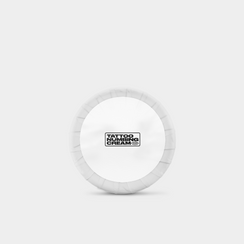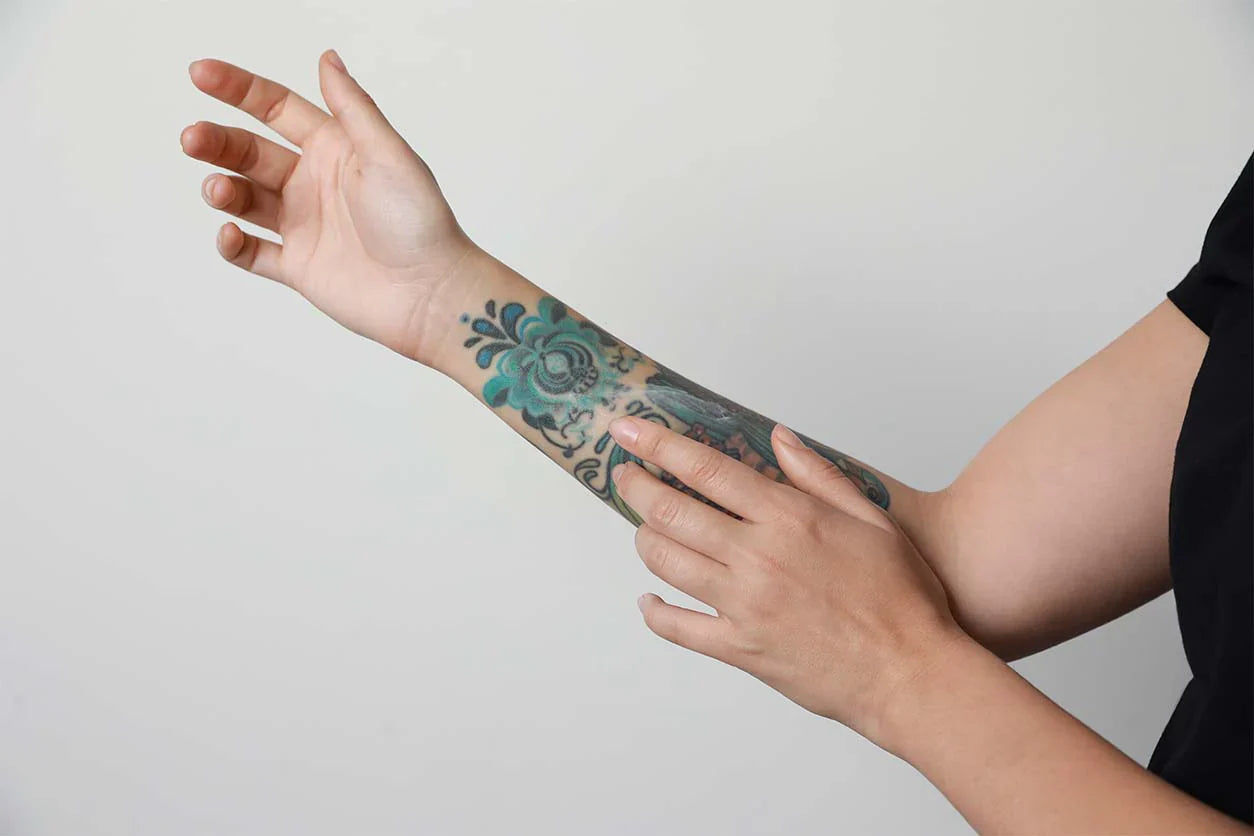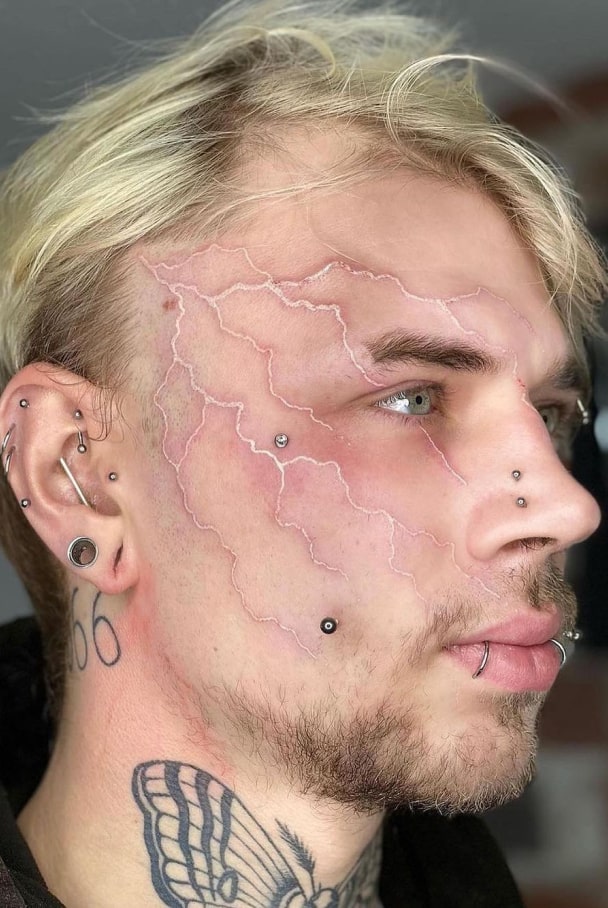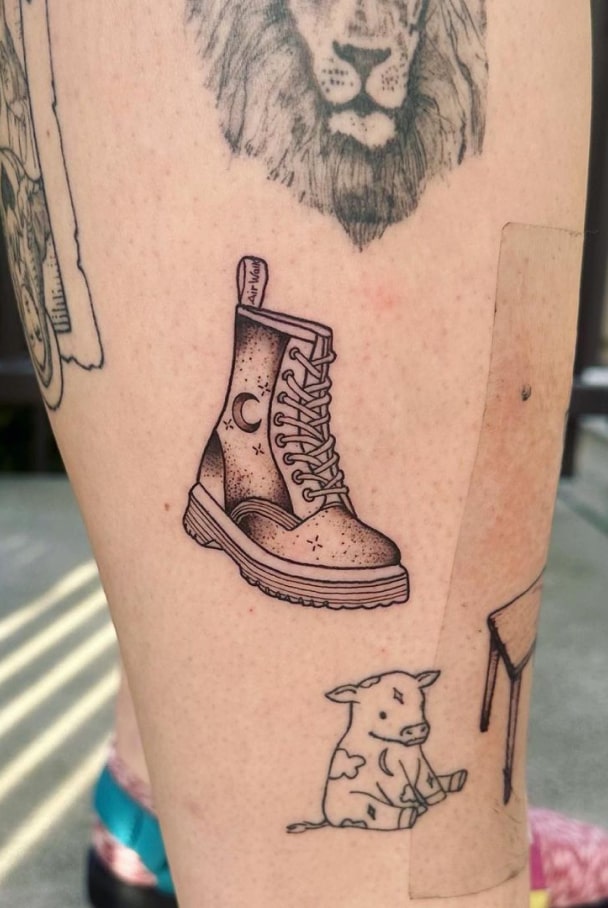Did you know a tattoo touch-up can sometimes be more painful than the initial session? This is especially true if the area has already been sensitised by previous tattooing sessions you’ve had before. If you're considering touching up some existing ink, you might be wondering whether numbing creams will help make the experience a whole lot more comfortable. Here, we'll explore the use of numbing creams for tattoo touch-ups, including their effectiveness, safety considerations, and tips for achieving the best results.
Understanding Tattoo Touch-Ups
Tattoo touch-ups are a common part of the tattooing process, often necessary to refresh colours, sharpen lines, or correct any fading or inconsistencies in the original design. It’s common throughout all different tattoo styles and techniques and may be required due to factors such as ageing, sun exposure, or changes in the skin's texture. While touch-ups typically involve smaller areas and shorter sessions than initial tattoos, they can still be uncomfortable, especially for individuals with low pain tolerance or sensitive skin. Let’s take a look at why your tattoo touch-ups might be more painful:
- Skin Sensitization: The skin in the tattooed area may have become more sensitive due to previous tattooing sessions, making it more susceptible to pain during touch-ups.
- Scar Tissue: Over time, scar tissue may form around the tattoo, which can be more sensitive to the tattoo needle and cause increased discomfort during touch-ups.
- Faded Ink: Touch-ups often involve going over areas where the ink has faded or become less vibrant, requiring more passes with the needle, which can result in increased pain.
- Nerve Sensitivity: Nerves near the surface of the skin may become more exposed or sensitised over time, leading to heightened pain perception during touch-ups.
- Skin Changes: Changes in the skin's texture, such as ageing or sun exposure, can make touch-ups more painful as the skin may be thinner or more delicate.
The Role of Numbing Creams
Numbing creams, also known as topical anaesthetics, are formulated to temporarily numb the skin, reducing the sensation of pain during tattooing or other cosmetic procedures. These creams typically contain active ingredients that work by blocking nerve signals in the skin, effectively dulling the pain receptors just like a local anaesthetic. All you have to do is apply to the desired area, wait for the cream to begin working, then enjoy a pain-free ink session like never before. High-quality tattoo numbing creams like ours will never impact the tattoo healing process and you can be sure to always get the best finish on all your ink.
Effectiveness of Numbing Creams for Tattoo Touch-Ups
Using numbing creams for tattoo touch-ups can be an effective way to minimise discomfort and make the experience more bearable. By numbing the skin's surface, these creams can help alleviate the pain associated with tattooing, allowing individuals to undergo touch-up sessions with greater ease and comfort.
However, it's essential to manage expectations when using numbing creams for tattoo touch-ups. While numbing creams can significantly reduce pain, they may not completely eliminate it, especially for more sensitive areas or prolonged touch-up sessions. Additionally, the effectiveness of numbing creams can vary depending on factors such as the specific formulation, application technique, and individual pain tolerance.
Considerations For Using Tattoo Numbing Cream On Touch-Ups
Safety Considerations
While numbing creams can provide temporary relief from tattoo pain, it's essential to use them safely and responsibly to minimise the risk of adverse reactions or complications. Tattoo numbing cream related allergies are rare but not unheard of. It’s always best to talk with your doctor and tattoo artist prior to use to make sure there’s no unwanted reactions.
Patch Test
Perform a patch test at least 24 hours before your touch-up appointment to check for any allergic reactions or skin sensitivities. Apply a small amount of numbing cream to a small area of skin and monitor for any signs of irritation or discomfort.
Follow Instructions
Always read and follow the manufacturer's instructions for the numbing cream you're using. Apply the cream as directed, and avoid exceeding the recommended dosage or leaving it on for longer than instructed.
Consult Your Tattoo Artist
Inform your tattoo artist that you'll be using a numbing cream for your touch-up session. They may have recommendations or guidelines for incorporating numbing cream into the tattooing process, ensuring optimal results while minimising potential risks.
Choose a Reputable Brand
Select a numbing cream from a reputable and trusted brand known for its quality and safety. Avoid using expired or counterfeit products, as they may pose greater risks of adverse reactions or ineffectiveness.
Monitor for Adverse Reactions
During and after your touch-up session, pay attention to any signs of adverse reactions, such as redness, swelling, itching, or irritation. If you experience severe or persistent symptoms, seek medical attention promptly.
Tips for Using Numbing Creams for Tattoo Touch-Ups
To maximise the effectiveness and safety of numbing creams for tattoo touch-ups, consider the following tips:
- Apply the Cream in Advance: Apply the numbing cream to the tattooed area at least 30 minutes to an hour before your touch-up appointment to allow sufficient time for it to take effect.
- Cover the Area: After applying the numbing cream, cover the tattooed area with plastic wrap or a bandage to help the cream penetrate the skin and prevent it from rubbing off.
- Communicate with Your Tattoo Artist: Maintain open communication with your tattoo artist throughout the touch-up session. Let them know if you're experiencing any discomfort or if the numbing cream's effects are wearing off.
- Stay Comfortable: Relax and try to stay as comfortable as possible during the touch-up session. Take breaks as needed, stay hydrated, and focus on deep breathing to help manage any remaining discomfort.
- Check Expiry Dates: Just like food items, tattoo numbing creams can expire too. Expired tattoo numbing creams have the potential to be less effective, and may even cause irritation and reactions in some rare cases.
Tattoo Touch-Ups With No Pain, All Gain
Using numbing creams for tattoo touch-ups can be an effective way to minimise pain and discomfort. This helps you to undergo touch-up sessions with greater ease and confidence, and make the tattoo experience that little bit more enjoyable. By following safety precautions, communicating with your tattoo artist, and managing expectations, you can achieve optimal results while ensuring a safe and comfortable tattooing experience.
Looking to invest in a high-quality tattoo numbing cream for your next ink project? Our creams offer an impressive 3 hours of numbing relief and will never impact the outcome of your tattoo. Customers and tattoo artists alike trust them and are the perfect pain-relief solution for your ink.








